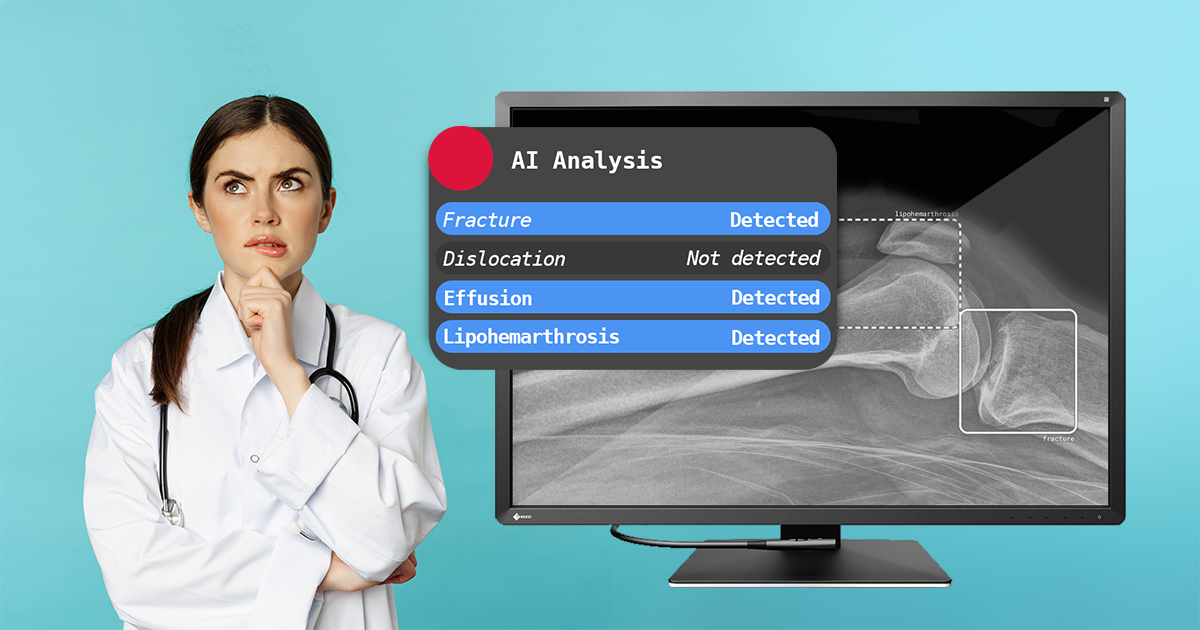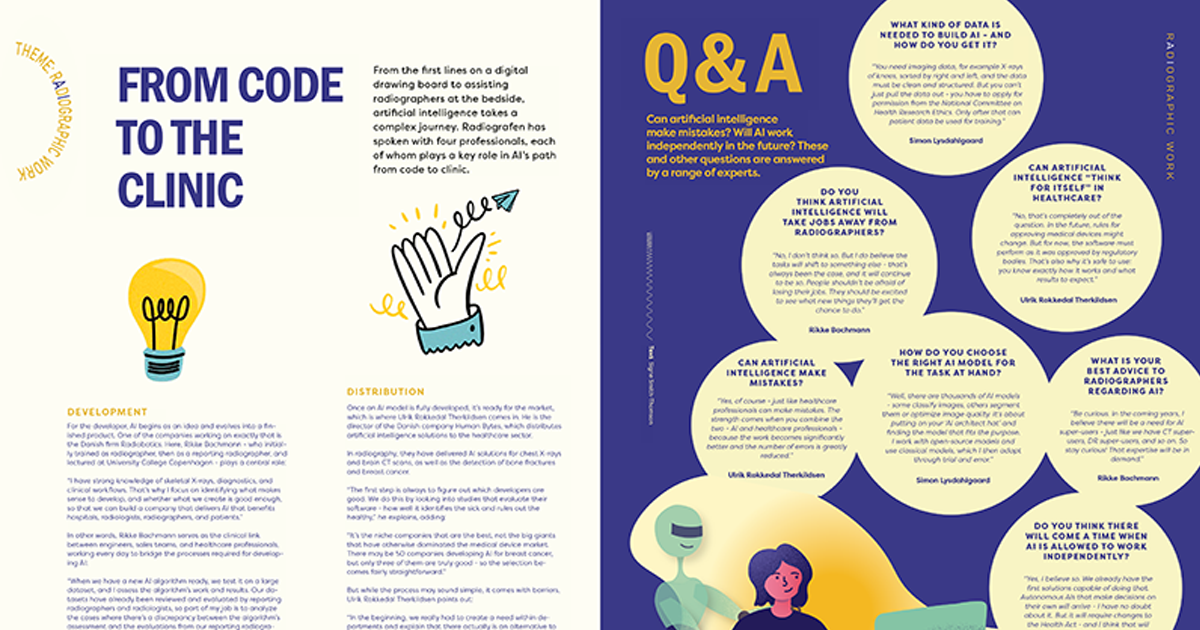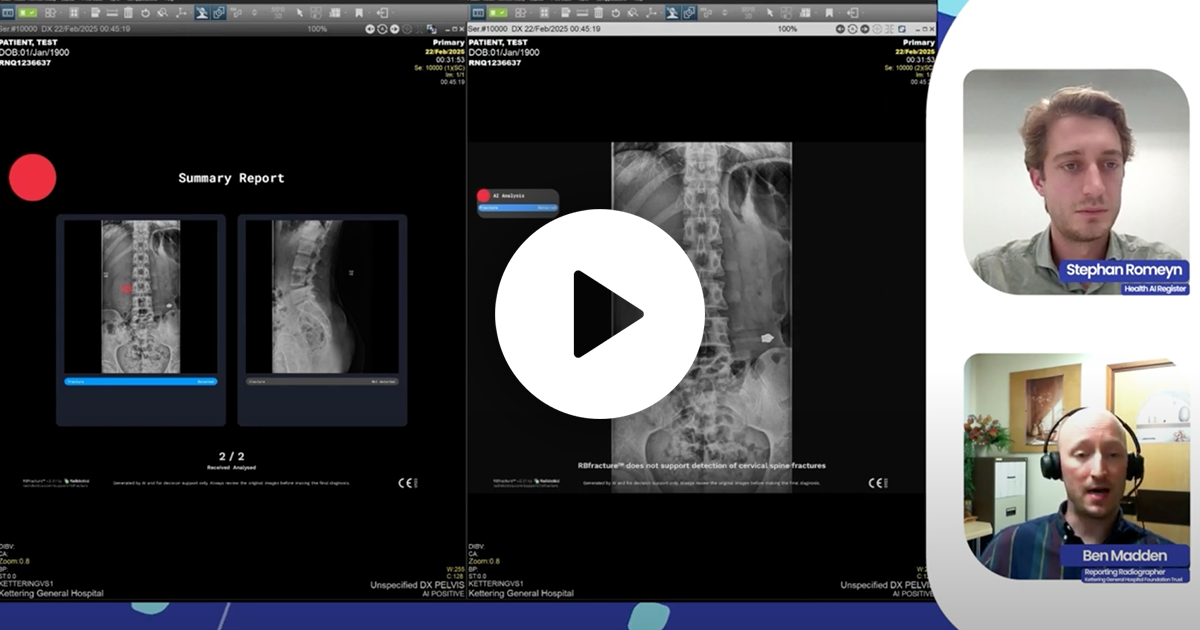Implementing AI in healthcare can be challenging, but setting up RBfracture™ is comparatively simple. Learn how Södersjukhuset implemented our AI-powered, automatic fracture detection seamlessly, and trained over 60 personnel in less than a day.
Why implementing AI in healthcare can be challenging
McKinsey & Company, a multinational strategy and management consulting firm, reported on the investment priorities of global health system executives in June 2024. Although most respondents reported a high level of satisfaction in digital investments, 75% of respondents reported they are not yet able to deliver on their digital transformation ambitions.
Budget or capital limitations were ranked as the number 1 challenge, and 34% of respondents ranked “readiness to adopt and scale new technology” as a top-3 challenge.
How to make implementing AI easy
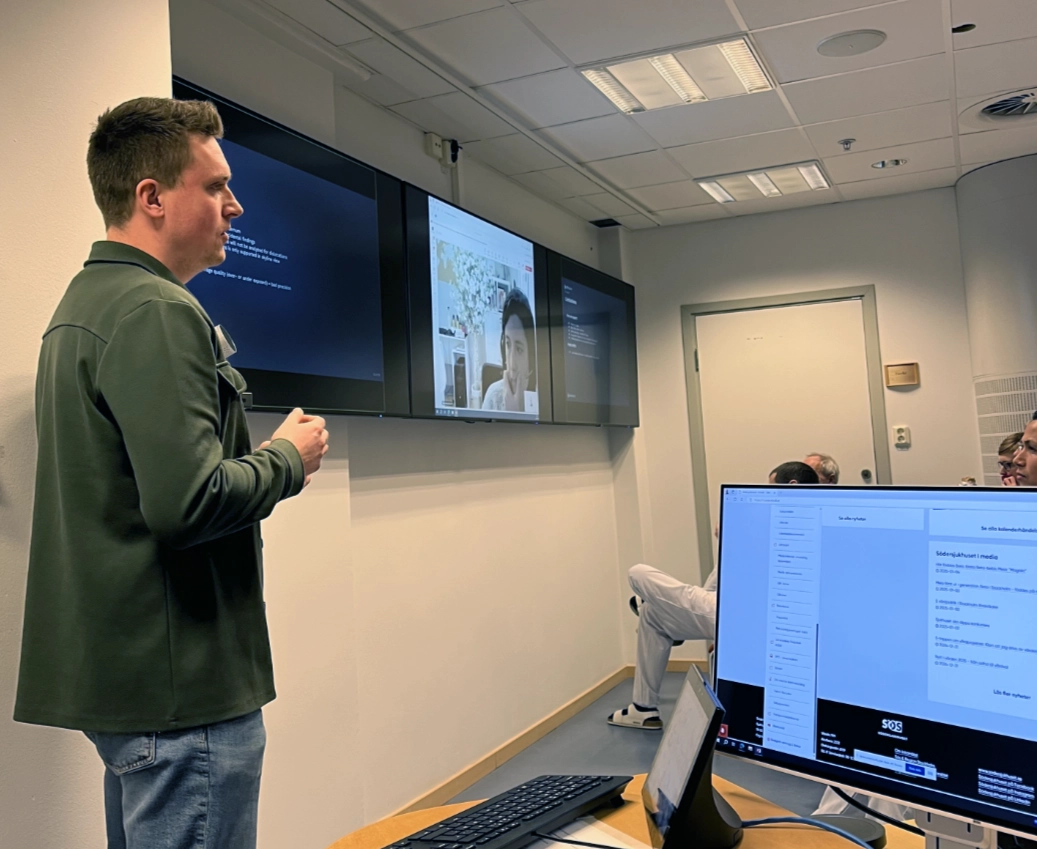
Martin Bjerregaard Wied, Sales & Customer Success Manager, presenting to the staff at Södersjukhuset.
- Low-risk: RBfracture is NICE-approved, already in use in national health systems across the world, like the NHS, and is the chosen solution for the AIFI pilot across five Dutch hospitals.
- High-value: Missed fractures are a well-documented issue in emergency and urgent care settings, and RBfracture’s clear performance metrics make it easy to justify the ROI.
- Easy to integrate: RBfracture is a straightforward solution, and clinicians and administrators immediately grasp its function and benefits. Plus, RBfracture integrates with existing PACS, is easily validated, and doesn’t require prolonged training.
RBfracture is a confidence builder for hospital leadership, radiologists, and emergency physicians who may be hesitant about AI adoption.
A step-by-step look at implementing RBfracture
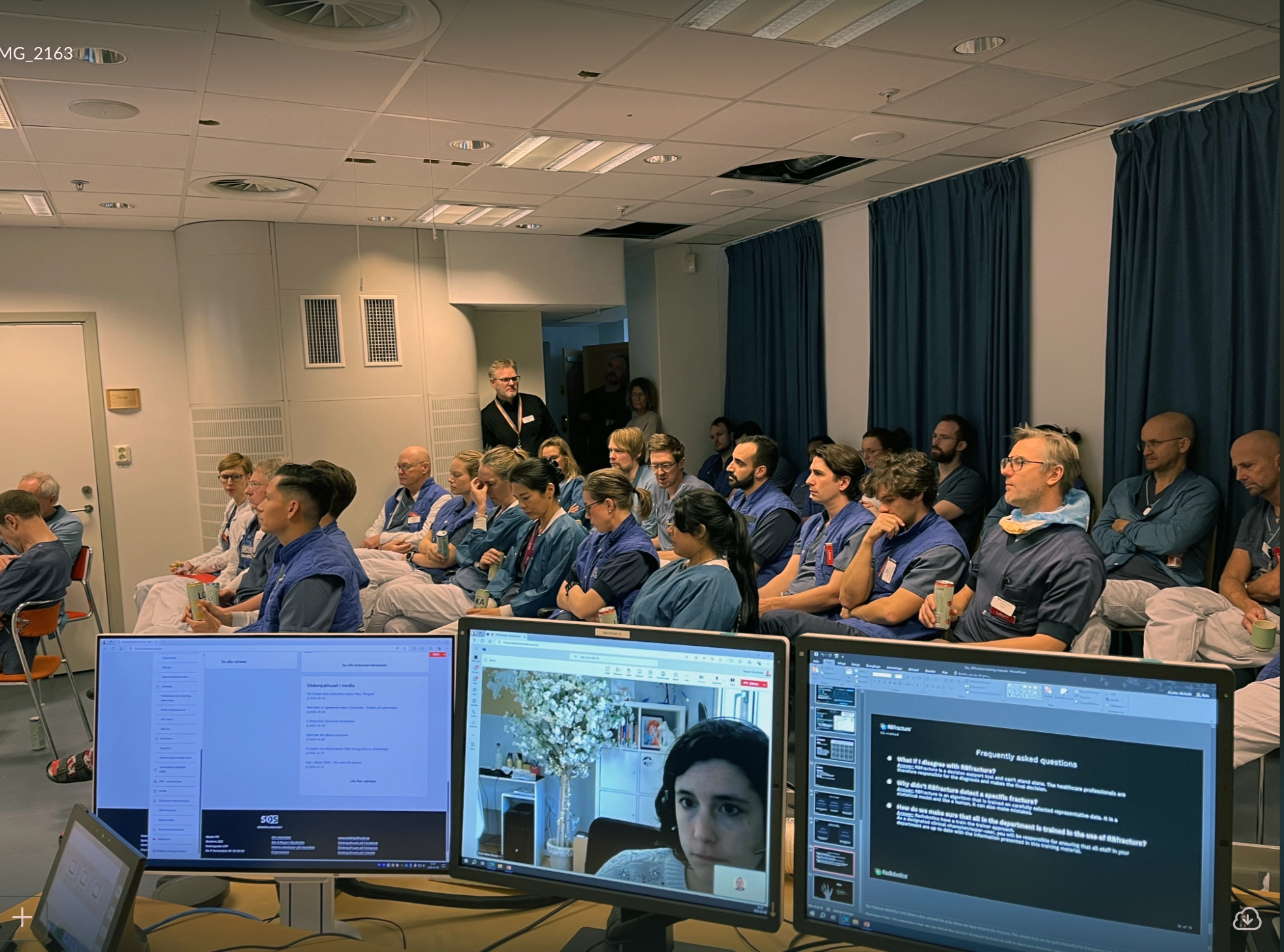
A training session with clinicians from Emergency and Radiology at Södersjukhuset
Once the deal is signed, the first step is to ensure compliance. We work closely with hospital legal departments to ensure that patient data is protected.
Next, we meet with the hospital’s radiology and emergency leads to ensure that the RBfracture setup is tailored to their specific needs — whether for Emergency, Radiology, or both — to ensure seamless access at the right workstations, language preferences, and turning certain features on or off.
Installation follows with the hospital’s IT team, integrating RBfracture with PACS and other systems. To maximize immediate adoption, we provide training simultaneously to ensure that staff can confidently use RBfracture from day one.
Even though this process requires interfacing with multiple hospital teams (Administration, Legal, IT, Emergency, and Radiology), AI adoption doesn’t have to be overwhelming. With a structured approach and hands-on guidance, staff can quickly get onboard and up to speed.
Addressing hospital readiness with user-friendly solutions
A large contributing factor to a hospital’s readiness to adopt and scale new technology is how quickly staff can learn to use the new technology.
Good news: RBfracture is a very simple product and doesn’t actually require any training. (Our Instructions for Use and regulatory compliance both state that it is unnecessary.)
However, we offer and recommend training simply as a matter of customer success. And so far, every customer has taken us up on the offer. Some organizations have no trouble getting everyone together in a room, but sometimes we train departments separately — in-person or remotely.
Our resources are easy, because RBfracture is simply designed to be user-friendly:
- A training deck of around 25 slides and
- A leave-behind “quick guide.”
Thinking about implementing AI in your hospital?
Let’s make it easy. Contact us today.

